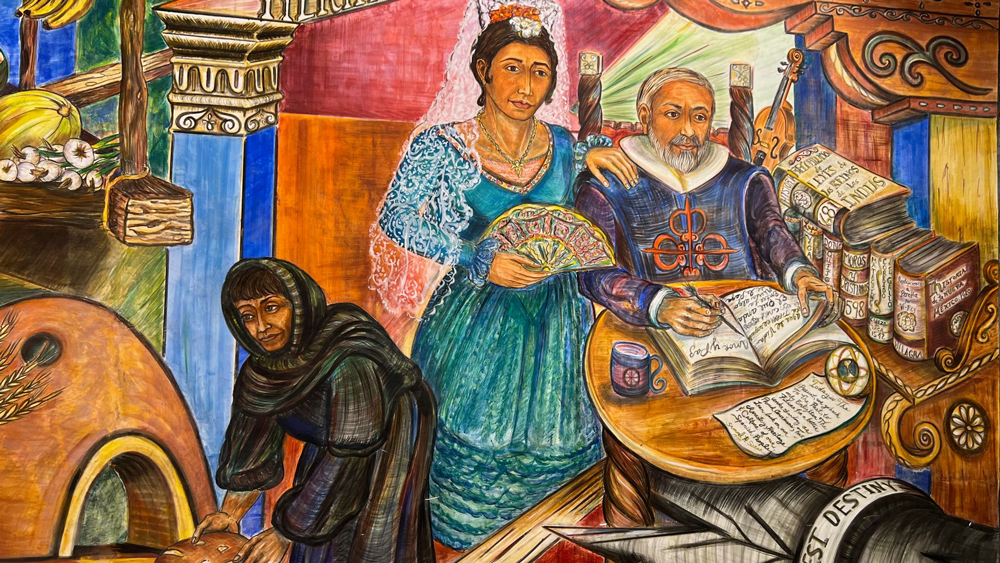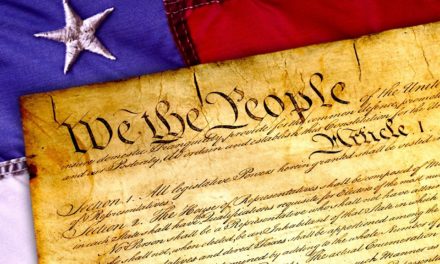Bernal Diaz del Castillo, a soldier of fortune who served under Hernan Cortes in the conquest of Mexico, provided a brilliant eyewitness account of the conquest of the Aztec Empire. Published in 1568 as The True History of the Conquest of New Spain, the book is a highly readable and exciting account of an epic battle between the Old and New World. I have recently discovered that Andres de Tapia, Cortes’s trusted Lieutenant who was frequently mentioned in Castillo’s account, is indeed my direct descendant twelve generations back.
Several bronze plates near the entrance of the Albuquerque Art Museum honor the soldiers and families that founded New Mexico in 1598. Captain Alonso de Sosa, his wife Beatriz Navarro, my direct ancestors [10th generation great-grandfather], were recognized among New Mexico’s earliest Spanish settlers.
The bronze plaques for Sosa and Navarro made me wonder where they came from and why they chose to go north across the Rio Grande to colonize unknown territory. With the aid of the Mormon database FamilySearch and Bing, a new Microsoft search engine, I ventured into discovering my association with de Sosa and de Tapia.
Alonso de Sosa [10th generation great-grandfather] was among the soldiers that New Mexico colonizer Juan de Onate recruited from the Zacatecas region of New Spain. Sosa was the grandson of Conquisdator Andres de Tapia Andres de Tapia [12th generation great-grandfather] and son of Francisco and Ines de Tapia.
Ines de Tapia was born in Medellin, Spain, the same birth town of Hernan Cortes, as was her future husband, Francisco de Sosa Albornoz. She emigrated to Mexico with her father Andres de Tapia sometime in the 1530s or early 1540s. In 1548, Ines de Tapia married Francisco de Sosa in Mexico City. She is described in a genealogy account as “daughter of the highly esteemed and remarkable Maese de Campo and Teniente” Andres de Tapia.
Andres de Tapia was a highly respected Spanish soldier who participated in the conquest of Mexico from 1519 to 1521. Tapia was born in Medellin, Extremadura, Spain in 1485 and lived in Sevilla as a young man. In Sevilla, Tapia is reported to have served as a valet to Admiral Christopher Columbus and journeyed to the New World in 1517.
In 1519, Tapia joined Hernan Cortes’s army which was preparing to embark on an expedition to explore the coast of China. The reference to China stems from the idea that at that time the Spanish explorers in Cuba still believed they had landed in India and that China was in close proximity.
Prior to the publication of Patricia De Fuentes’ book, The Conquistadors: First Person Accounts of the Conquest of Mexico, scholars and students interested in details of the conquest relied heavily on Bernal Diaz del Castillo’s The True History of the Conquest of Mexico [originally published in Spanish]. Three scholars, Castillo [1568], De Fuentes [1963], and Cervantes [2021], all comment on the close association of Andres de Tapia with Cortes. De Fuentes’s publication is especially critical to understanding Tapia’s role in the conquest of Mexico.
De Fuentes wrote that in Andres Tapia’s chronicles “there are first-hand accounts of the march from Veracruz to the great city of Mexico-Tenochtitlan, and the impressive welcome that Moctezuma gave the Spaniards.” I should add that prior to the founding of Veracruz, Cortes
learned that three Spanish sailors may have been stranded in Cozumel and that one, a Spanish missionary, had been rescued.
Tapia documented Cortes’s first landing in Cozumel in 1519 where friendly natives informed Cortes and his men of three Spaniards living among them who had been shipwrecked some years earlier. One of the survivors, Tapia wrote, was a friar who claimed to have been stranded for ten years. The friar joyfully joined Cortes. Tapia noted that another Spaniard [Jeromino Aguilar] “had taken as wife an Indian woman of rank” and refused to leave with the Spaniards.
From Cozumel, Cortes’s ships sailed to the province of present-day Tabasco where upon landing they were attacked by Mayan natives. Cortes defeated the combatants. In return, Tapia wrote, the Mayans “gave the marques [Cortes] twenty of the women they kept as slaves.” Tapia was among the first of Cortez’s men to recognize that “one of the women” [whom other scholars called Marina or La Malinche] spoke both the Mayan and Nahuatl languages. Since the rescued missionary had learned the Mayan language, he could communicate with
Marina, and in turn, she could speak to the Aztec and Mayan Indians.
Cortes and his soldiers continued on their journey and next found a natural harbor which he named Veracruz. As the Spaniards moved inland, they repeatedly heard stories about the Aztecs and their formidable leader Moctezuma. In an effort to convince the Spaniards to leave the area, the Aztec emperor sent, according to Tapia, “a gold disk and another of silver, each the size of a cartwheel…said to
represent the sun and the moon.” Tapia’s description is precise, and he captured the dynamics of two major societies about to clash.
Cortes ordered Tapia and two other of his men to place Moctezuma under house arrest following an attack on the Spaniards by Aztec forces in Veracruz. Tapia captured the moment with precise detail. He described Moctezuma as saying with all the gravity imaginable: “My person is not one to be taken captive, and even if I should consent, my people would not tolerate it.” Tapia’s account abruptly ends with Cortes convincing the Spanish forces sent to arrest him for leaving Havana without permission to join his conquering forces.
In the aftermath of the fall of Mexico-Tenochtitlan, Tapia received an encomienda [award of Indian labor]
from Cortes. In the book The Encomenderos of New Spain, Himmerich y Valencia listed Andres de Tapia as a “First Conqueror,” a reference to those who served with Cortes in the conquest of Mexico. Valencia wrote that in the early 1520s, Cortes assigned Tapia, his “close associate and vecino of Mexico City, the encomienda of Cholula [60 miles east-southeast of Mexico City].”
Tapia’s fortune changed somewhat a few years later when Cortes gave Tapia’s Cholula parcel to the father-in-law of his first wife. However, in 1530, according to Valencia, Cortes gave Tapia the Veracruz region of Tuxpan, Papantla with control of at least 60 estancias in the lowlands of Panuco.
Andres de Tapia’s account of the conquest of Mexico is one of only six eyewitness accounts that documented the fall of the Aztec Empire. Unfortunately, we lack a fuller understanding of the Aztec perspective of the conquest. Thus, much research remains to be done, and hopefully, with the new technology for ancestor research, that story will also be discovered.
Andres de Tapia Wrote An Eyewitness Account of the Conquest in Mexico in 1519









